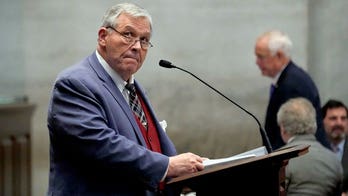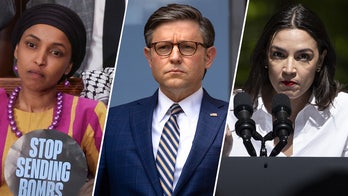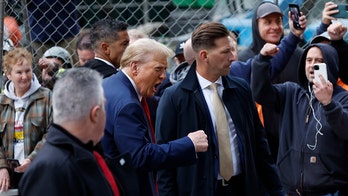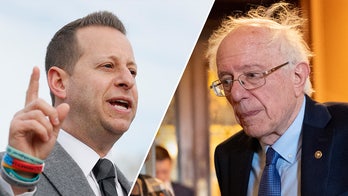This time the system worked.
They kept the fight outside the U.S. Capitol.
I have heard the same mantra from former House and Senate sergeants-at-arms and U.S. Capitol Police chiefs for decades now. "Keep the fight outside," they’d say.
One former USCP chief always insisted to me the Capitol was secure.
Until it wasn’t on Jan. 6.
There was tragedy at the Capitol again on April 2.
Police say 25-year-old Noah Green rammed a blue Nissan Altima into USCP Officers Billy Evans and Kenny Shaver. Green then plowed the car into a reinforced steel barricade blocking his route to the Capitol, jumped out and wielded a machete. Officers shot and killed Green.
Evans died. Shaver made it.
Evans will lie in honor in the U.S. Capitol Rotunda this week. He’s the fourth USCP officer Congress has so honored – and the second one this year.
But unlike on Jan. 6, the security worked on April 2. They kept the fight outside.
It is beyond tragic that Evans died. It’s calamitous that four Capitol police officers have ever perished defending America’s seat of government – and two have paid the ultimate sacrifice in less than three months. Officer Brian Sicknick died shortly after the Jan. 6 riot. Officer Jacob Chestnut and Detective John Gibson died in July 1998 after a crazed gunman stormed the Capitol.
But this time, the protocols worked and kept Capitol Hill safe – thanks in part to Evans’ sacrifice.
A gigantic fence still encircles the Capitol after the Jan. 6 attack. In mid-March, security officials eliminated an outer security perimeter that sealed off the Capitol complex and adjacent House and Senate office buildings for blocks around. Authorities maintained the inner fence, protecting just the immediate "square" around the Capitol itself. They also cut down concertina wire that ran atop the fencing. Officials also re-opened Constitution and Independence Avenues, which run parallel to one another on opposite sides of the Capitol.
Green wouldn’t have been able to get as close as he had to the Capitol had the outer perimeter remained up. Or, at least whatever Green did would have happened further away from the Capitol.
Instead, Green came up Constitution Avenue, and made a 90 degree turn into one of only two entrances to the Capitol complex. This is a driveway that leads to the Senate side of the Capitol. A small contingent of Capitol Police officers stand vigil there, 24/7. They’re now accompanied by a nearby force of National Guard troops. Another batch of officers is located nearby in a hardened guard shack. More officers are holed up in another guard shack closer to the Capitol.
There is a double driveway for vehicular ingress and egress. Each lane is protected by two layers of massive steel barricades that can be raised and lowered. Go a few feet and there’s another set of roadway fortifications. They are bulky. You can practically hear the weight of the barricades when raised and lowered. Steel grazes steel, producing an uncomfortable, industrial-sounding "nails-on-chalkboard" shriek. That’s always followed by a deep, hollow thump. The thud attests to the weight of the barricades when they’re finally maneuvered into a resting position.
There aren’t a lot of vehicles that drive onto the Capitol grounds these days. Some key staffers. Members. In a normal, pre-pandemic, pre-Jan. 6 time, this was a main entryway to the Capitol. Senators and aides would rush through this gateway to get to the Capitol for votes. Reporters would stand nearby and sometimes chase a sought-after lawmaker with cameras.
But now, there aren’t a lot of reporters around. There are no tourists. The Capitol remains locked down thanks to the fence. Only people with a hard pass can get into the immediate grounds.
Lawmakers return to the Capitol this week. The Senate has been gone more than two weeks. The House, more than three. It’s the first lengthy recess of any period, with both the House and Senate being out. There was only one short hearing of the period. The House and Senate were in session through the holidays, trying to pass the fifth COVID package and override the veto of former President Trump of the defense bill. So lawmakers will return to a Capitol again reeling and shocked after another attack.
Lawmakers are trying to figure out what to do to avoid another attack.
"This rips the scab off," said Rep. Tim Ryan, D-Ohio, just hours after the security incursion on April 2.
Ryan chairs the House Legislative Branch Appropriations Subcommittee. He’s in charge of doling out the money Congress spends on itself – for security and everything else. House Speaker Nancy Pelosi, D-Calif., says Congress will craft an extra spending bill this year dedicated to congressional security.
"It’s time to elevate the conversation. It cannot fall into other political arguments," said Ryan. "Today was another blow."
There’s no agreement among lawmakers about how to properly secure the Capitol. That could hinder progress. But if there’s any good news about the the attack on April 2, officers kept the fight outside. That’s a big difference between what happened then and what unfolded on Jan. 6.
Granted, the problem on Jan. 6 is that there were thousands of rioters who descended on the Capitol. More than 800 penetrated the building. That was inherently a tougher challenge. But the difference between the two incidents reveals instances where the Capitol is vulnerable and where it remains secure.
Acting Washington, D.C., Police Chief Robert Contee said just hours after the April 2 attack that it did "not appear to be terrorism related."
April 2 appears to be a one-off. A "lone wolf." Someone determined to come to the Capitol and unleash mayhem. That’s akin to what happened on July 24, 1998. Russell Weston Jr., who had a history of mental problems, came to the Capitol and killed Officer Chestnut and Detective Gibson. There wasn’t a larger organized threat.
Jan. 6 unveiled a threat of a different sort. A large, violent, determined crowd, many of whom have been charged with attempting to interfere with Congress certifying the Electoral College.
So, congressional security officials have learned something in the past three months.
The building is pretty secure against a one-off like April 2. But vulnerabilities remain against a throng.
Against one threat, the system worked. They kept the fight outside.
But a glaring weakness remains against the other threat.






